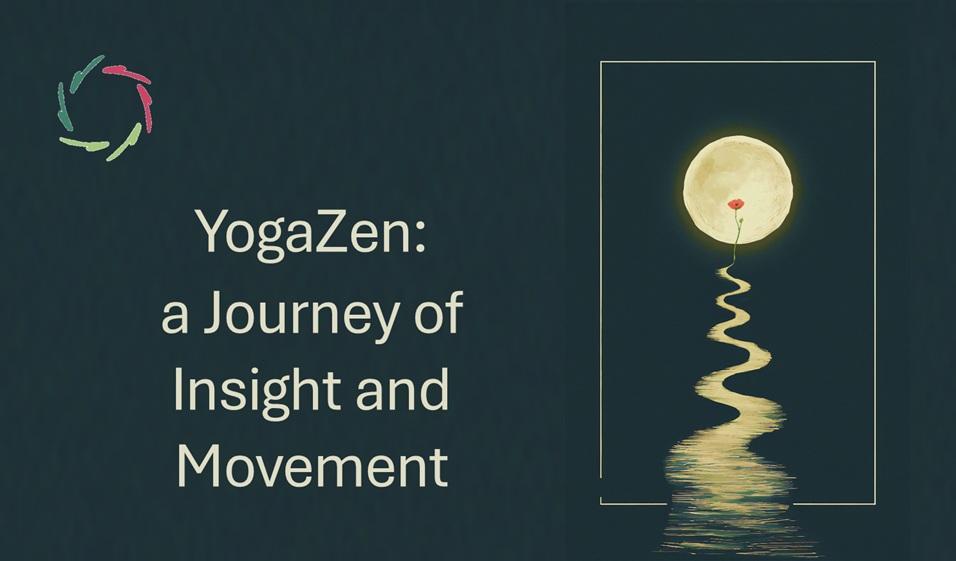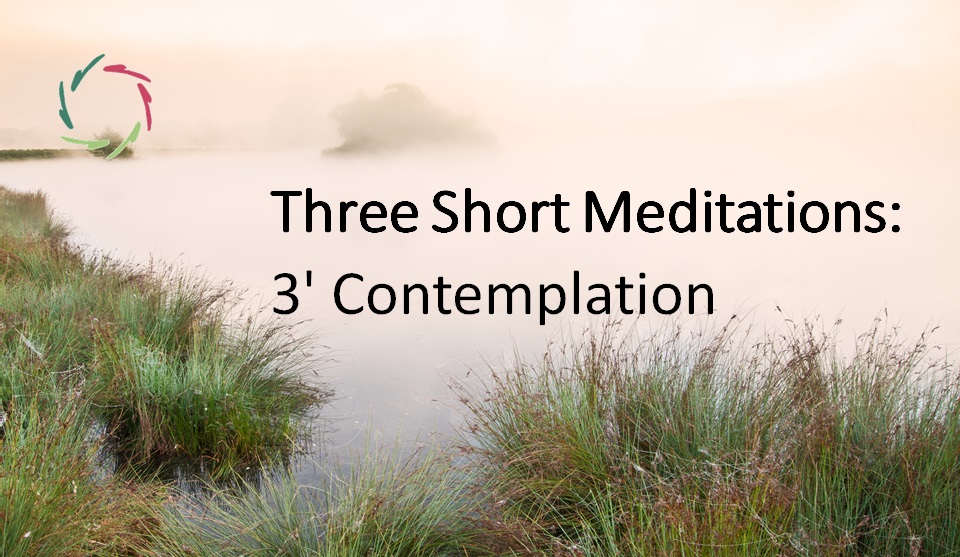YogaZen: a Journey of Insight and Movement

YogaZen is not just another form of yoga, nor is it just Zen with a few added movements. It is a fusion of two ancient traditions, designed to bring insights to life in a way that remains with you. It is a way of growing from within, where movement and reflection intertwine naturally.
In YogaZen, movement is an invitation — a moment of openness where body and mind meet, allowing a deeper understanding to emerge. Each movement follows an insight, not the other way around. Through this, it becomes an embodied experience, something that takes root far beyond the session itself. This organic, inside-out growth process makes YogaZen unique.
[For an introduction to the AureliZen series, goto AureliZEN: a Journey into Deep Growth and Open Leadership.]
Movement as an invitation
Instead of actively pushing the body into positions, YogaZen invites it to move. It’s about listening to what is already there.
This is why every YogaZen session includes reflection. After each movement, we take a moment of stillness — not to analyze, but simply to be. Insights don’t always come in words. Sometimes, they are a feeling, a shift, an opening. The movement prepares the ground.
Like a seed germinating beneath the surface, change does not need to be immediately visible to be real. The depth of this process is similar to where the inner self plays a powerful yet subtle role in shaping reality.
YogaZen as a practice
YogaZen does not rely on an extensive set of postures. The number of movements is intentionally limited, allowing for deeper integration. What matters is the quality of engagement — the way each movement is experienced in the moment. [see: YogaZen How-to]
A key principle is that movement should happen naturally. Ideally, it becomes almost ideomotor, happening with minimal conscious effort, like breathing or blinking.
Rather than saying, I move my arm upward, we might say, “The movement happens with me.” There is a profound difference. It shifts the focus from doing to allowing — from external action to an inner unfolding.
Even visualization can be enough. If the body does not move, the mind can still experience the movement, and this too has an impact. The point is not to force action, but to remain in touch with what is genuinely happening inside.
The role of deep relaxation
In YogaZen, deep relaxation is the center. Movement is a way to prepare for it. In this sense, YogaZen is deeply Zen. The goal is to arrive in a state of quiet presence.
When the body thus relaxes, it becomes an open space for insight. The relaxation itself is an invitation — just like the movement before it. And sometimes, insight grows without words, like a silent understanding settling into place. This aligns closely with a process of deep meditation, where transformation occurs below the surface, often beyond direct awareness.
The YogaZen experience
YogaZen gently expands boundaries. The emphasis is on being present with what is.
Many people believe mental growth happens by stepping outside the comfort zone. In YogaZen, we expand the comfort zone itself. We work at the edge of possibility, creating an openness that allows new movement to emerge.
This is not about achieving external perfection. It is about developing a deeper connection — with the body, with the mind, and with the moments of insight that arise when the two work together.
The interplay of movement and meaning
The way we move says something about the way we think, the way we relate to challenges, the way we exist in the world.
A stiff, hesitant movement may reflect an underlying fear of change. A movement that flows effortlessly may signal an openness to new experiences. The body does not lie. It expresses what the mind might not yet be ready to say.
By engaging in YogaZen, we do not just move — we learn. And this learning extends beyond the session, into work, relationships, and everyday moments of choice. Real change is not a surface-level process, but something that reshapes us from the inside out.
YogaZen and the AURELIS perspective
YogaZen and AURELIS share the same foundation: deep respect for natural inner change. YogaZen is also an intrinsic part of AureliZen experiences/seminars. Both avoid coercion. Both work from the inside out. Both invite transformation without force.
Just as autosuggestion allows deep shifts without external pressure, YogaZen allows movement to unfold without forcing it into place. Just as AURELIS emphasizes growth as a total person, YogaZen integrates body and mind in a way that is both subtle and profound.
Invitation to experience YogaZen
YogaZen is something to feel, to explore, to allow.
Workshops offer the opportunity to experience YogaZen in a guided setting, with space to let movement and reflection unfold naturally. Each participant has a unique journey that cannot be predicted in advance, only discovered along the way.
This is an invitation to listen more deeply and remain open to what emerges.
A way of being
YogaZen is a different way of engaging with life ― offering a gentle, continuous path that brings movement and insight together in a way that feels natural, yet deeply transformative.
If this resonates with you, perhaps it is time to explore YogaZen as something to experience. Something to grow into. Something to allow to happen.
Just as the movement happens with you, so too does insight. When the time is right and the correct invitation is there, it arrives.


